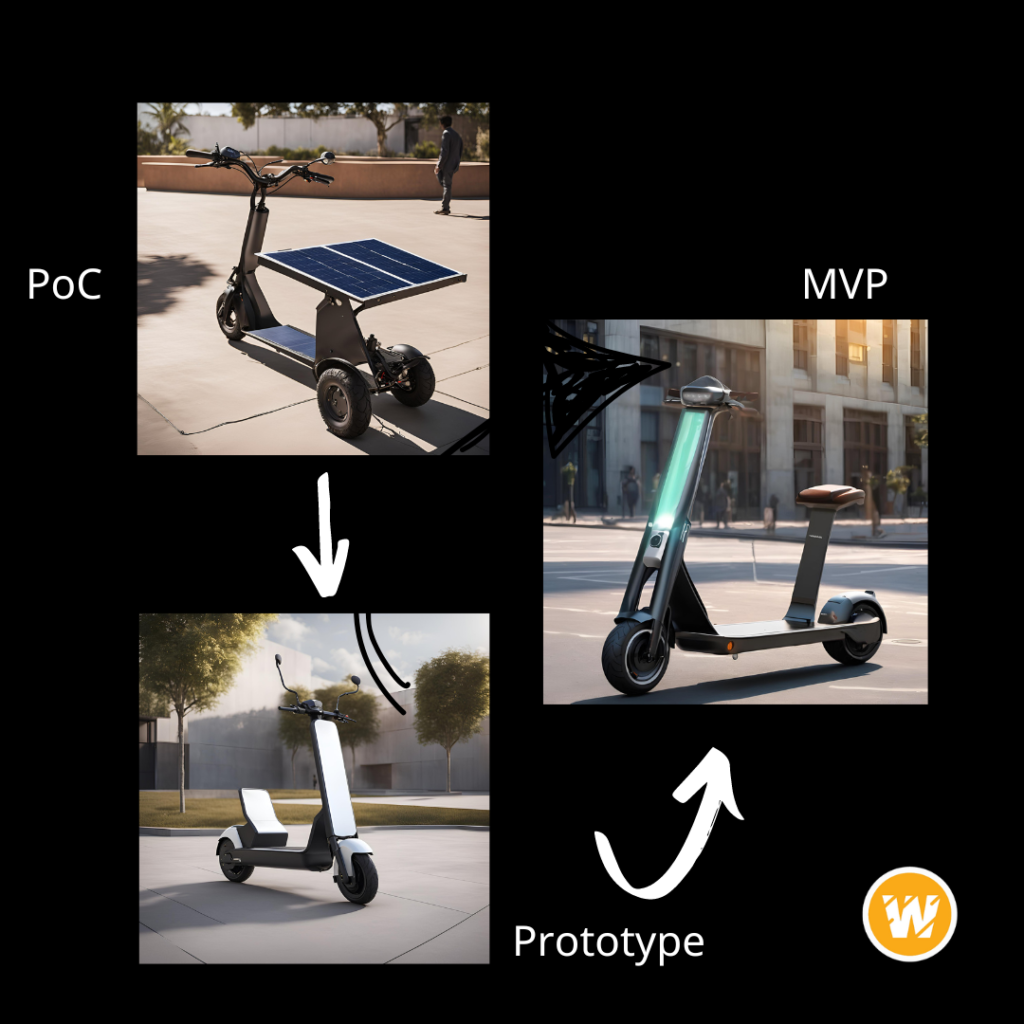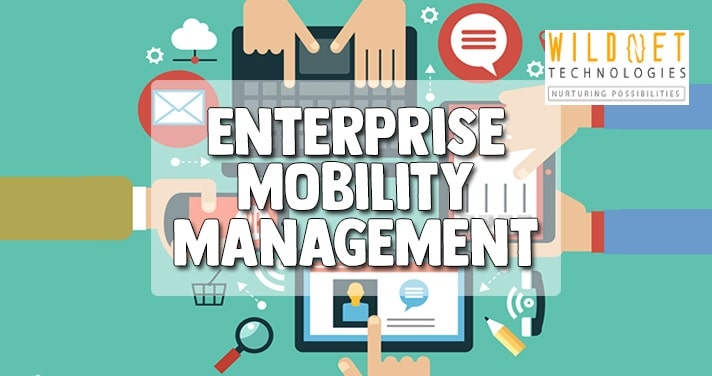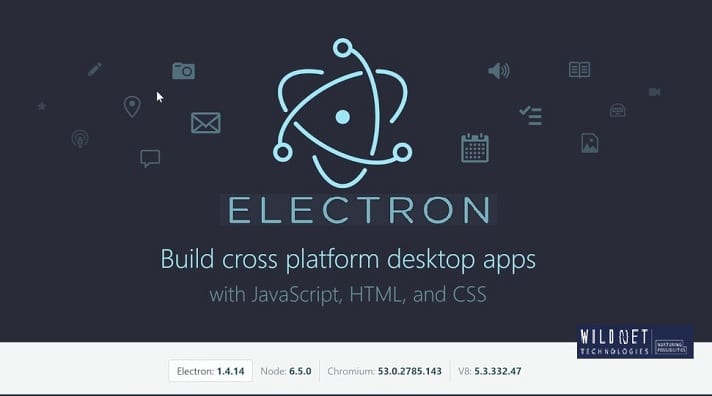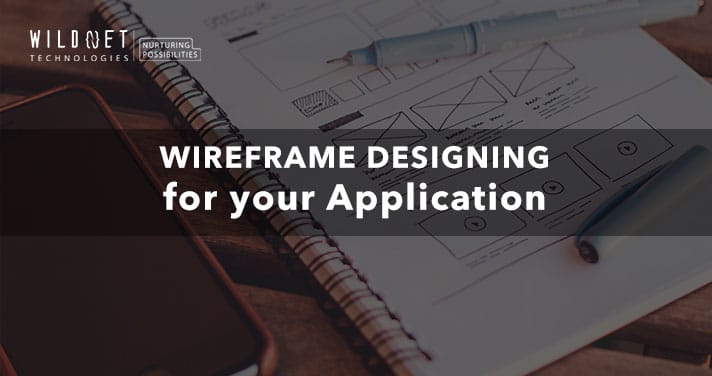In the realm of product development, three terminologies frequently rise to the fore: Proof of Concept (PoC), Prototype and Minimum Viable Product (MVP).
Each term represents a different stage in the life cycle of a product. Nonetheless, there are some uncertainties about their differences.
This paper is intended to explain these terms. The unique roles they play in product development will be explored.
First, we will go into detail regarding Proof of Concept (PoC), which is a small project that tests a specific concept or theory. Then we will discuss prototypes as well as preliminary designs for products which indicate how those products work.
Finally, we shall look at the Minimum Viable Product (MVP) that has just enough features to satisfy early customers and provides feedback for future development projects.
By understanding these terms, you will be able to navigate the process of developing your product more effectively. This guide is meant for entrepreneurs, product managers and software developers.
Understanding the Basics
Let’s define our key terms before delving further.
Proof of Concept (PoC)
A small initiative aimed at testing whether an idea can be implemented in reality. It is used to verify that an idea is possible without necessarily making any commitment on investment. Examples include prototyping or dry runs using algorithms. It differs from prototype since it’s tangible though not fully functional. It however does not embody full functionality but has more touch than a PoC., while still remaining less workable than real POCs.
For example: You have an idea for an electric scooter that can charge itself using solar panels. Describe how you would create a Proof of Concept (PoC) to test the feasibility of this idea. What steps would you take, and what outcomes would you expect to demonstrate the concept’s viability?

Prototype
Prototype refers to an initial version of a product created primarily to highlight aspects like its functionalities and design as well as user interactions. In contrast with POC this does not completely implement functions instead shows what functions would do if implemented For instance when users interact with it then how it feels like., unlike PoCs that need no interaction and cannot be seen
Think this: After proving that solar charging for an electric scooter is feasible, outline the process of developing a prototype. How would you integrate the solar panels into the scooter’s design, and what aspects of functionality and usability would you focus on? What would you aim to achieve with this prototype?

Minimum Viable Product (MVP)
MVP is a product that has enough features to satisfy early adopters. A start-up’s objective when developing an MVP is to get it out into the market as quickly as possible, gather feedback, learn more about what their customers want and iterate.
There is also the term MVC worth mentioning here. MVC stands for Model-View-Controller. It is a design pattern in software development used to make code easier to maintain and scale.
MVC, however, is not MVP though it seems crucial for software developers. It provides an outline on how you should structure your application code so that you can have it easy when maintaining and scaling your app.
But this discussion also mentions “MVP”, which stands for Minimum Viable Product. However, “product” in this term refers to something else or process through which a business refines its offering.
Imaging Having built and tested prototypes of your solar-powered electric scooter, describe how you would develop a Minimum Viable Product (MVP). What features would you include in the MVP, and how would you introduce it to early adopters? Explain how you would use the MVP to gather user feedback and validate the market need.

Knowing these terms are the first steps toward understanding product development nuances.
Proof of Concept (PoC): Validating Ideas
Proof of Concept (PoC) usually forms the first stage of any project. It is normally a small project designed specifically to test some concept or theory.
The main aim of a PoC is actually to validate ideas by determining if they can be technically executed. The question here would be: Can we actually build this?
A functional product isn’t usually achieved through PoC but rather concept validation. This means proving whether an idea works but not necessarily demonstrating its practicality or value.
One of the benefits of PoC is that it can help in getting stakeholders’ buy-in; hence, making them invest into future development projects due to opportunities identified with them. Thus proving viability at-test costs before moving ahead with major developments may be one way of using such proofs in cases where requirements are time critical It saves teams from potential stumbling blocks at the outset during full-scale implementation thus enabling them identify challenges early on.
The word PoC is not only limited to software development but is also applicable across various sectors, ranging from hardware to services.
For example, in the hardware industry, a PoC could be a basic circuit that is built to demonstrate the feasibility of an electronic design. In the service industry, a PoC might be a pilot program used for testing new business models.
PoC, as always, is about proving an idea through brainwork and within the shortest time possible. This involves taking precautions against risk and uncertainty before proceeding to more resourced development phases.
The User Experience Shaping by Prototyping
In most cases, making an initial prototype follows after validating an idea through PoC. A prototype can be defined as a first version of a product created to show how it works.
Contrary to PoCs, prototypes are not only meant for proofing what can be done. It’s about how it will happen. It is also about refining aesthetics and user experience.
Prototypes play a critical role in user testing. They enable teams to collect qualitative feedback on how well the product design meets market requirements. Development teams take this feedback into account when designing their final versions before market release.
Typically, building a prototype is an iterative process where different versions may go through testing until settling on one particular design. Through such gradual improvements each iteration brings the product closer to its ultimate shape.
Prototypes rarely include all functionalities found in finished products; they usually do not involve complete engineering effort either; they aim at producing something good enough to test and get feedback from users.
It is important to know that prototyping is not limited to physical products only but it can also apply in software development like creating interactive interfaces with clickable links or mobile application mockups
Prototyping entails turning ideas into actual products that customers can touch and give their opinions on—this makes it necessary during product development stage since helps bridge conceptuality gap between imagination and reality
Minimum Viable Product (MVP): Entering the Market
The next step after prototyping during product development process often involves developing a Minimum Viable Product (MVP). Therefore, an MVP is a product developed with just enough features for early adopters to give feedback on.
The MVP means more than being a prototype. It is a product that performs its functions and can be used in the market immediately. The aim is to make the customers experience the new product’s value as soon as possible.
MVP includes core features that represent the company’s main value proposition. These are the features which set it apart from competitors and deliver value to customers.
An MVP development entails more than creating a product, but creating a feedback loop as well. This enables firms to learn from their customers and keep improving on their products.
For instance, having a feedback loop is central to lean start-up movement; it emphasizes the need for speedily bringing your wares into marketplace while learning from customers and modifying them.
Here below are a number of MVP examples that have succeeded:
Dropbox: Before making their product, the Dropbox team developed a simple video showing how it would function. It was this video that brought them many signups and confirmed that people were interested in the product.
Airbnb: The first version of Airbnb was merely an internet site where its founders let others rent out their own apartments. Consequently, this bare bones model allowed them to verify the existence of a demand for peer-to-peer accommodation service.
Zappos: In order to start his online shoe store, Zappos’ founder started by taking pictures of shoes at local stores and posting them on the web. If someone wanted a pair, he’d go buy it from the shop and ship it to the customer. Therefore, this enabled him to prove that there was a market for an online shoe store without any inventory.
These instances indicate the power behind using MVP method in developing products. Teams can learn from their customers quickly and iterate on their offerings by concentrating on core value proposition and rapidly introduce it into marketplace hence minimizing chances of building a product nobody wants thus leading to success.
From PoC to Prototype to MVP: The Transition
Transiting from one stage of development process to another requires careful planning as well as execution. Every stage right from PoC through prototype onto MVP is unique in itself with its challenges or considerations.
One best practice for transitioning between stages is to clearly define the objectives for each stage. For example, during PoC phase, objective can be validating technical concept while prototype’s objective could be refining user experience.
Another best practice is to manage resources effectively. Whereas some levels require time commitment only others need cost investment too. It’s necessary therefore that resources are prepared and allocated accordingly.
Defining success criteria for each stage is also crucial. These criteria can help guide the development process and provide a clear benchmark for when to move on to the next stage
For example, a successful demonstration of the technical concept may define success in PoC stage. While positive user feedback on the user experience, for prototype stage. And as for MVP stage, it could be a specific number of customers who pay or particular revenue.
By following these best practices, teams can transition smoothly from one stage to the next and increase their chances of success.
Common Misconceptions and Pitfalls
In product development, there are many misconceptions. One common misconception is that a PoC, prototype and MVP are all different names for one thing while in actuality, each has its unique role in development process.
Another misconception is that a successful PoC or prototype guarantees a successful MVP. However, each stage has its own success criteria and challenges. A concept or design that works well in the early stages may not necessarily translate into a successful product in the market.
One common pitfall is rushing through the stages without proper planning and validation. This can lead to wasted resources and a product that doesn’t meet market needs
Another mistake is neglecting user feedback. Whether it’s a PoC, prototype or MVP; user feedback helps to refine the product so as to align with users’ needs and expectations
These misconceptions can be understood and pitfalls avoided by teams to increase their chances of coming up with successful products.
Measuring Success and Next Steps
PoC, prototype, MVP – Success is measured differently for these stages. In PoCs, success often means having a concept that is technically feasible and has market potential.
For a prototype, success can be gauged through user feedback. These include how consumers use the product and their total experience. Additionally, evaluation must consider whether the prototype communicates well the product’s value proposition.
For an MVP, success is defined by market response which encompasses customer engagement, users’ feedback as well as initial sales. It should also consider whether all its core value propositions are met.
Timing in strategy defines everything in product development: transitioning from PoC to Prototype then MVP depends on results at each stage. Each stage needs iteration and refinement of a product based on feedbacks and results obtained during that stage.
After MVP; scaling up the product according to market feedback takes precedence over adding features. Such initiatives require continuous testing, iteration toward improvement in addition to this being where you build a robust go-to-market strategy that drives growth and success.
Conclusion
Therefore; PoC, prototype and MVP are different stages separated into three components of new product development processes. Technically feasible and potentially valuable concepts are validated using Proof-of-Concept (PoC). A prototype improves user interface design. An MVP on the other hand is a ready-made-for-market version that embodies the main value proposition for customers.
Each stage plays a crucial role in moving from idea to market-ready products. Specifically they assist with validation of ideas; fine tuning user experience plus testing them against market response. This leads to risk reduction while optimizing resources hence enhancing probability of successful products development.
In order to make effective product development it is necessary to understand distinctions between several types such as PoC,Prototype,MVP and when move from one step to another. It is a journey of continuous learning, iteration and improvement with the ultimate goal of creating a product that meets market needs and delivers value to customers.
We, at Wildnet Technologies, have been a leader in software development and It Services! We have had a great solution developmental experience over our 17+ years journey, wherein we served 400+ clients and developed 2100+ projects successfully and hence indefinite happy clients. Thus, we would be the best IT Services partner for your software development needs, Check out our Design & Development or Software Consulting services!
If you would like to learn more,
- Devin & Devika: The World’s First AI Software Engineers
- Importance of App Maintenance and Updates
- Wildnet’s Digital Yum (our weekly newsletter)
Reach out to us at info@wildnettechnologies.com and rake in the Software benefits!







